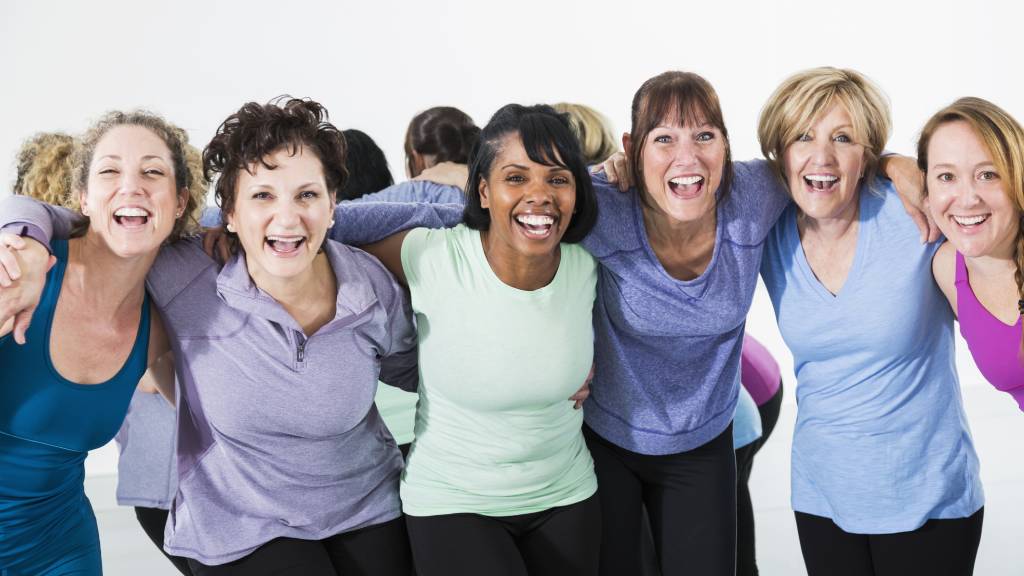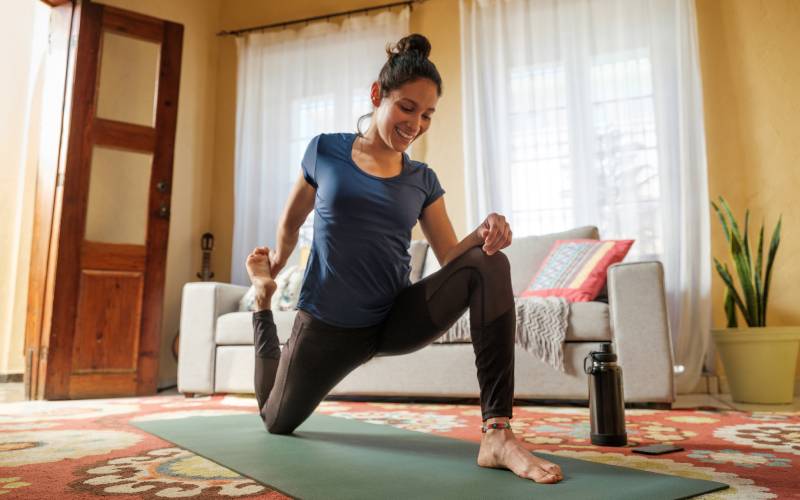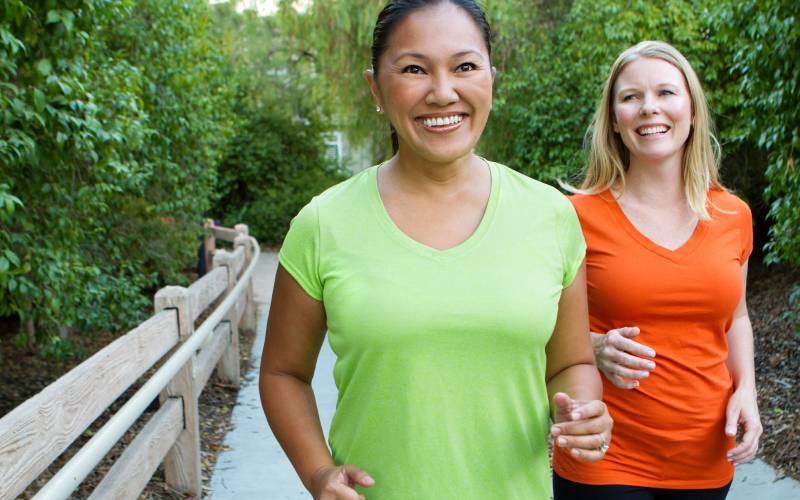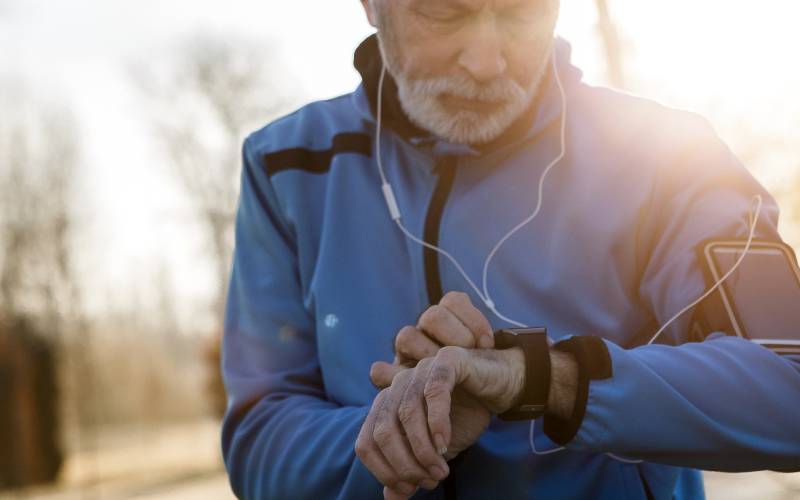What are the best exercises to do for my age group?

Exercise is a cheap and easy way to stay active and healthy – but as the years roll by, many Australians tend to fall into bad habits, which can negatively impact our quality of life and our overall wellbeing. According to the latest data from the Australian Institute of Health and Welfare, there’s a marked decline in physical activity as we age, with the Australia’s Health 2018 study finding that more than half (56%) of all adults are not sufficiently physically active.
There’s no doubt that exercising at every life stage is important – but how much should you be doing, and what types of exercise are most appropriate for your age group? We reveal everything you need to know. Head to the references section of this blog at the bottom of this page for further reading and resources you can check out, and remember to always check with your health professional before embarking on any new exercise regime. Now let’s go!
Regular exercise and staying healthy at every age
Getting back into exercise is often the most difficult first step. Once you get the ball rolling, it becomes easier to manage and even becomes an enjoyable experience. The good news is that just 30 minutes of moderate intensity activity most days is enough to provide health benefits. Furthermore, data from the Australian Bureau of Statistics found that “if all Australians did an extra 15 minutes of brisk walking for at least five days each week, this would reduce our risk of disease due to physical inactivity by approximately 13%. By increasing this to 30 minutes, the risk of disease attributed to physical inactivity could be reduced by 26%.
Here’s a handy breakdown of what types of exercises – and how much exercise you should be doing – are appropriate for your age group.
Exercising in your 20s

The Australian Institute of Health and Welfare states that only 17% of adults meet both the physical activity and muscle-strengthening activity guidelines. And while the 25–35 age group has the largest percentage of Australians participating in fitness and gym activities, those aged 18–24 fall way behind – and good habits should start early. So if you’re in your 20s you should be exercising most days, focusing on both cardio and strength training.
A good goal to aim for is between 30–60 minutes of cardio for six days a week, and 30 minutes of weight training for three days a week. That gives you one full day of rest to repair those muscles and replenish your energy levels.
Physical activity recommendations: Mix up your cardio with outdoor running, brisk walks, treadmill, elliptical and rowing machines.
Muscle-building recommendations: Weightlifting sessions, if possible, but even the humble plank (as pictured above) can build serious muscle – and core strength – over time. It’s not as easy as it looks!
Exercising in your 30s

As soon as you hit 30, you’ll start to feel that exercise isn’t as easy as it used to be and losing weight takes a little more time – all because our basal metabolism shrinks by 1–2% every decade. That’s why it’s so important to continue regular exercise in your 30s.
Aim for a mix of cardio and resistance training for an hour each day, four times a week, and about 45 minutes to an hour of high-intensity cardio at least one day per week. Don’t forget to take it easy on your two days of rest as well!
Physical activity recommendations: Join a running group to keep you accountable for your exercise goals. Yoga, Pilates, high-intensity interval training (HIIT) and circuit training (cardio + resistance) are also great ways to keep your fitness plans fresh.
Muscle-building recommendations: If weightlifting is no longer as fun, explore new ways to build muscle like Pilates.
Exercising in your 40s

A slower metabolism is an unfortunate by-product of this stage of life, which means it’s harder to maintain lean muscle mass and easier to put on body fat.
Do cardio exercise at least three times a week, but preferably five, of around 45 minutes each time. This may sound like more than in your 20s or 30s but it should be done at a lower intensity so there’s less impact on your body. Also build in an hour of whole-body weight training (lower intensity than you did in your 20s and 30s) three times a week.
Physical activity recommendations: Go for a brisk walk with friends or family and explore new areas of your local suburb. Take a spin class with a group of like-minded people who can really help you push for the burn.
Muscle-building recommendations: Yoga and Pilates are great for low-impact muscle-building, but you can get a similar effect at home with things like weighted squats and stair-climbing.
Exercising in your 50s

Your metabolism might be seriously slowing down, but that’s one reason why you shouldn’t throw exercise out of the window in your 50s.
Spend around half an hour on cardio four to six times every week – in terms of intensity, you should be able to chat with a friend in very short bursts but not be able to hold a conversation the entire time. Weight training should drop to around twice a week, 30 minutes at a time.
Physical activity recommendations: Set a goal of at least 10,000 steps every day. It’ll help you stay up and about, and it’s a good goal to strive for even if you don’t feel like doing cardio.
Muscle-building recommendations: Not keen on joining the younger crowd at the gym? Buy a couple of dumbbells, watch some YouTube training videos, do plenty of bodyweight exercises – if you are determined to stay fit and healthy, it’s achievable.
Exercising in your 60s and beyond

Unfortunately, at this stage of life you’re more prone to issues like arthritis and dodgy knees – not to mention an increased chance of injury when exercising. So it’s important you scale things back.
Spend three days on cardio, as well as three days of weight training. Around half an hour of each should be enough to get your heart rate up but not put too much strain on our body. If you’re unsure where to start or have pre-existing health issues, be sure to speak to your doctor before starting a new exercise regimen.
Physical activity recommendations: A slow jog at this age should be challenging but not exhausting. Tai chi is a gentle form of martial arts that can really help you maintain good flexibility. Swimming is also excellent low-impact exercise. Make sure to walk whenever you can – to see friends, grab a coffee or enjoy a long evening stroll with a loved one.
Muscle-building recommendations: You can still lift weights, but make sure you use lighter weights and do fewer reps. Daily balance exercises will also help strengthen your muscles and especially your core.
Just because you’re in a certain age group doesn’t mean you shouldn’t be exercising most days. The first hurdle is starting – from there, it’s all about consistency!
Exercise and good nutrition are the keys to a healthier body, but you can’t plan for the unexpected. That’s where life insurance can help. If you’re already making a change with exercise, why not consider protecting your loved ones’ way of life with a life insurance policy?
29 Jul 2020